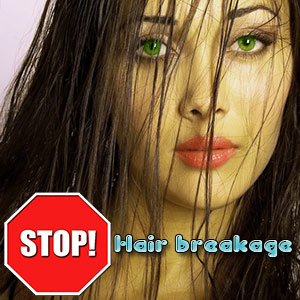Laser Hair Removal

Removing body and facial hair has always been a female preoccupation. Some races tend to have more hair on their body when compared to others. Sometimes excess hair tends to run in families. Isn't it ironical that while men are obsessed with their balding pates, women agonize over hair removal techniques?
Most women are on the lookout for a body hair removal product that suits their needs and budget and is as safe and discreet as possible. Peruse our guide on various hair removal products. Get the lowdown on laser hair removal technique and its cost. Learn how hair removal wax and electrolysis work at removing body hair.
Hair removal
Hair removal can be done by 2 methods - depilation and epilation. Depilation involves removal of the hair at the skin line. Use of razors or chemical depilatory creams are depilation techniques. Epilation involves hair removal from below the surface of the skin. With this technique, hair takes longer to grow back. Waxing, tweezing and electrolysis are examples of epilatory treatments for hair removal.
A study conducted by Gilette found that nearly 92% of women in the US shaved their legs in the early 1990s. Though electronic tweezers were introduced in the late 1950s, they were not so popular. Depilatory lotions and creams also surfaced in the market around the same time. This painless way of body hair removal still finds favor with a large segment of women. Body hair wax has been a popular hair removal technique in Europe and South America. It offers a smooth though painful method to remove body hair. Electrolysis and laser hair removal are techniques that destroy the hair follicle.
Laser hair removal
In 1995, the FDA cleared laser hair removal treatment for the first time using Nd:YAG lasers. Laser hair removal treatment must be conducted at a physician's office or special salon that is licensed to operate a Class II medical device. The regulations for laser clinics vary by state in the US. It is impossible to guarantee permanent hair removal even with laser treatment. But many consumers have experienced long lasting hair removal and hair reduction with laser treatments. When performed by qualified and skilled technicians, it is safe and useful for large areas of hair growth. Laser treatment for hair removal involves transmitting light at specified wavelength to the skin.
Since it targets dark material, the hair is attacked. There is thermal and mechanical damage to the hair follicle. The re-growth rate of hair cannot be predicted since it depends on many variables. The skin is anointed with a carbon-based lotion like chromophore. The laser beam heats the carbon repeatedly and causes a shock wave of energy that can damage nearby cells. In case the patient experiences pain, a topical anesthetic is used or ice pack is applied. The comfort level is enhanced with gel or spray. The hair that may regrow after a laser treatment is soft and not coarse and rough.
Laser hair removal treatment works well on persons with light skin and dark hair. In the case of darkly pigmented persons or tanned persons, their skin might absorb too much laser energy. Fewer sittings are required on persons with lighter skin and better results are obtained. Since dark hair absorbs more laser energy, it is easier to remove. Laser hair removal treatment works best on coarse dark hair. Light hair, blond and red hair is most difficult to remove with laser treatment.
Since blond hair tends to contain pheomelanin, it absorbs laser energy less avidly than eumelanin that is present in brown or dark hair. Since hair grows in stages, laser treatments are effective only after a few sittings. This takes care of hair in different stages of growth. Areas that react best to laser hair removal are face, upper lip, neck, chest, back, underarms, abdomen, legs and bikini line. In between laser sittings, you can keep yourself fuzz-free by using a depilatory cream or shaving. Use of waxing is not recommended since the laser will not be able to find the hair follicles during the next sitting.
Laser hair removal cost
The cost of laser hair removal varies with the size of area to be treated. Typically, laser hair removal treatment involves at least 4 sittings and each sitting costs about $500. While smaller areas such as the upper lip and chin can be lesser per laser treatment sitting, large areas such as the entire back or entire legs would cost considerably more.
Some laser hair removal clinics offer a flat fee on package treatments. Another common pricing structure for laser or electrolysis methods of hair removal is hourly basis. This means that the cost of laser hair removal depends on the amount of hair to be removed and the speed of the laser technician and the speed of the laser hair removal machine.
Hair removal product
Check out the pros and cons of different types of hair removal products available:
Depilatory creams and lotions: This hair removal product is available in gel, cream, lotion, aerosol and roll-on form for ease of use. Depilatories work much like a chemical razor blade as they cause the hair to separate the hair from the skin surface. They contain calcium thioglycolate or some other highly alkaline substance that dissolves the protein structure of the hair. High levels of calcium thioglycolate can cause skin irritations and possible chemical burns. Thioglycolate disrupts disulfide bonds, which are chemical bonds that hold skin and hair cells together. The disulfide bonds that hold hair together contain more of the protein cystine than do the disulfide bonds that hold skin cells together. Thioglycolate is more effective on disulfide bonds that contain cystine.
It is always advised to conduct a patch skin test to check for skin allergic reaction and sensitivity. A depilatory cream is left on the skin for about 4 - 12 minutes. Some depilatory formulations are created for specific sensitive areas. Take care to ensure that these creams are not applied on the eyebrows or around the eyes.
Razors: Shaving is resorted to by many women to remove excess body hair from their legs and hands. This procedure must never be followed on the face. It is a myth that shaving makes the hair shaft grow thicker and darker. But the short hair shaft that grows tends to have a blunt tip instead of the normal tapered tip. This makes the hair more noticeable. You must use a body wash or hair conditioner to soften the skin and hair before you shave the hair. Shaving is the least expensive body hair removal method.
Tweezers: Plucking with tweezers is yet another hair removal technique. Since each hair is individually picked, this process of hair removal can be very time consuming. It works best on stray hair on the upper lip or chin or to get the eyebrows in shape.
Hair removal wax: Waxing is an effective way of removing large amounts of hair at a single time. A thin layer of heated wax is applied on the skin in the direction of the hair growth. The hair becomes embedded in the wax as it cools and hardens. Strips of muslin cloth are applied on the wax and pulled off quickly in the opposite direction of the hair growth.
This causes the hair to be pulled out from its roots. You can pick up strips of pre-coated wax to remove body or facial hair. These body wax strips come in different sizes for use on eyebrows, upper lip and chin. Women suffering from diabetes or circulatory problems must avoid waxing their body. Open sores, warts and varicose veins must also not be waxed. Don't apply very hot wax lest you scald your skin.
Cold wax is available in paste or gel form or as pre-waxed strips. But cold wax is difficult to apply and remove. The waxing process of hair removal evolved from the Middle Eastern sugaring method of body hair removal. It may sometimes lead to irritation and redness on the skin. Waxing results generally last from two to six weeks. Cold wax for hair removal can be bought at any drugstore or cosmetic store.
Warm waxing gives better results. Wax is heated in a warmer or microwave till it is just melted and easy for application. If you are using any Retinoid skin products, you must avoid waxing since it may leave the sore area with a brown scar. Hair that grows after waxing is not coarse like shaved hair. But the pain is usually sharp though for a short duration. Waxing may disturb the hair follicles causing them to grow in different directions.
Electrolysis: This hair removal process involves using low-level electric current to kill hair follicles. This hair removal process must be conducted by a reputed practitioner. Electrolysis works well for women with white or blond hair. Ensure that new needles are used each time
Vaniqa: This is a FDA approved topical cream that reduces and inhibits growth of unwanted facial hair. It has an active ingredient - eflornithine hydrochloride that inhibits the enzyme that aids cell functions necessary for hair growth. It is applied twice a day to areas of unwanted facial hair and results can be noticed after about 4 - 6 weeks of usage.
Epilator: Mechanical epilators work much like a set of precisely placed tweezers. They can pull out hair that is extremely short too. But here too, the pain factor is high.
Facial hair removal
If you notice unsightly facial hair, despair not. You can pluck them out with a pair of tweezers if they are just a few and far between. But repeated plucking may cause irritation and may result in scars. Hair on the upper lip and the fine hair on the side of the face can be removed with hair removal wax.
Electrolysis hair removal
Electrolysis hair removal technique was invented by Dr. Charles E. Michel. It was initially intended to remove ingrown eyelashes but later was extended to destroy hair roots all over the body. There are 3 different methods of electrolysis that you can choose from:
- Galvanic electrolysis or DC creates a chemical reaction in the hair follicle. A minute amount of lye is produced as a reaction of the electrologist's needle and body salts. This lye is caustic and destroys hair follicle
- Thermolysis involves use of high frequency waves or alternating current (AC) to kill hair cells. The high frequency waves produce enough heat to destroy the hair follicle.
- Blend method of electrolysis combines both electrical currents and hastens the reaction.
The dermal papilla is destroyed and may result in slight redness and swelling. Electrolysis hair removal can be used nearly everywhere on the skin. Typically electrolysis costs per hour, ranging from around $50 to $100. Electrolysis hair removal of upper lip hair can take anywhere between 4 - 10 hours while arms may take about 10 hours. You can pick up a personal electrolysis device for hair removal at home.
Top of the Page: Laser Hair Removal
Tags:#hair removal #laser hair removal #permanent hair removal #hair removal product #body hair removal #facial hair removal #laser hair removal cost #electrolysis hair removal #hair removal wax
 Hair Loss
Hair Loss Thinning Hair Remedies
Stop Hair Breakage
Damaged Hair Care
Scalp Psoriasis
Hair Loss Treatment and Hair Restoration
Female Hair Loss
Menopause and hair loss
Pattern Baldness in Women
Hair Weaving
Hair Frizz
Ingrown Hair
Hair Care in Winter
Hair Masque
Hair Detanglers
Hair Color
 Covering Grays
Covering Grays Balayage Hair Color
Blonde Hair Long
Red Hair Color
Brunette Hair Color
Hair Highlighting
Eclipting Hair Color
Different HairStyles
 Easy Hair Style
Easy Hair Style Virtual Hairstyle
Punk Hairstyle
Celebrity Hairstyle
Asian Hairstyle
Interactive Hair Style Gallery
Messy Side Braiding
Braid Hair Style
Updo Hair Style
Kid Hair Style
Bob Hairstyle
Hair Perm
Hairstyles for Long Hair
Curly Hair Style
Medium Length Hairstyles
Hair style Tips
 Hair Parting Tips
Hair Parting Tips Hairstyles to look Younger
Washing Hair
Faster Hair Growth
Hair Makeover
Curling Iron
Hair Accessory
Laser Hair Brush
Hair Gel
Hair Transplant
Hair Extension
Hair Mousse and Hairspray
Blow Drying
Hair Dryer
Cysteine Hair Treatment
Hair Straightening
Laser Hair Removal
Human Hair Wig
Dandruff Shampoo
Top of the Page: Laser Hair Removal
Popularity Index: 100,908

